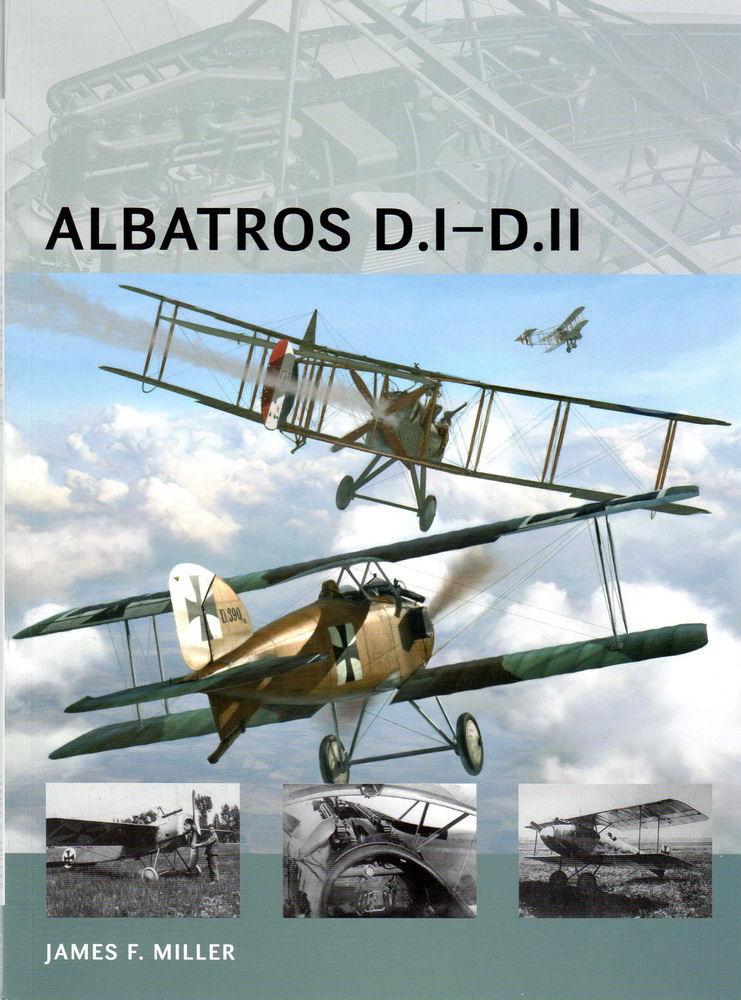Albatros D.I – D.II
Osprey Publishing provides many different lines of aircraft information books for the enthusiast. These include the Aces series, the Elite series, the Dual series, and others. This latest series, Air Vanguard, seems to combine the best of the other series and really seems to be aimed at the modeler as well as the aviation enthusiast.
The World War I timeframe resulted in an unbelievable amount of progress in aviation. The aircraft of this book entered the fight just 13 years after the Wright Brothers’ first flight. During 1916, the Albatros design team seemed to be working on several designs at the same time. The first D.I’s entered the Western Front in September, 1916. These were accompanied by a prototype of the D.II. These designs featured many aerodynamic improvements from previous aircraft in production, either with the Allies or the Germans. These included water-cooled engines, solid streamlined fuselages, and aerodynamic attention to struts, etc. The production models of the D.II entered service only two months ahead of the improved D.III model. During the latter part of 1916, Albatros fighters allowed the Germans to achieve a bit of air superiority and provided a learning experience to many of their well-known aces, such as Boelcke and von Richthofen. The Albatros fighters allowed the Germans to score decisive victories during “Bloody April”.
The book consists of 64 pages of great information. Two full color three-view drawings are provided, along with four color profiles, a page of color detail drawings, and a fold-out rear inside cover cut-away drawing of the D.I. Great detail black and white photos are included on most pages. The individual chapters include Design and Development, Technical Specifications, Operational History, and Conclusion. An Index and Bibliography, which includes lots of other Osprey books, are also included. The Tech Spec chapter includes sub-chapters on Factory Finishes and Idiosyncrasies, and on Staffel Finishes. Talk about throwing fresh meat to the modeler.
As a modeler, this book would probably provide all the information that I need to make an accurate model of a D.I or D.II. As an aviation enthusiast, I really appreciated the details of the development and operation of the aircraft.
The book is well recommended as described above. A big thank you to Osprey for the sample, and to IPMS/USA for assigning it to me.





Comments
Add new comment
This site is protected by reCAPTCHA and the Google Privacy Policy and Terms of Service apply.
Similar Reviews